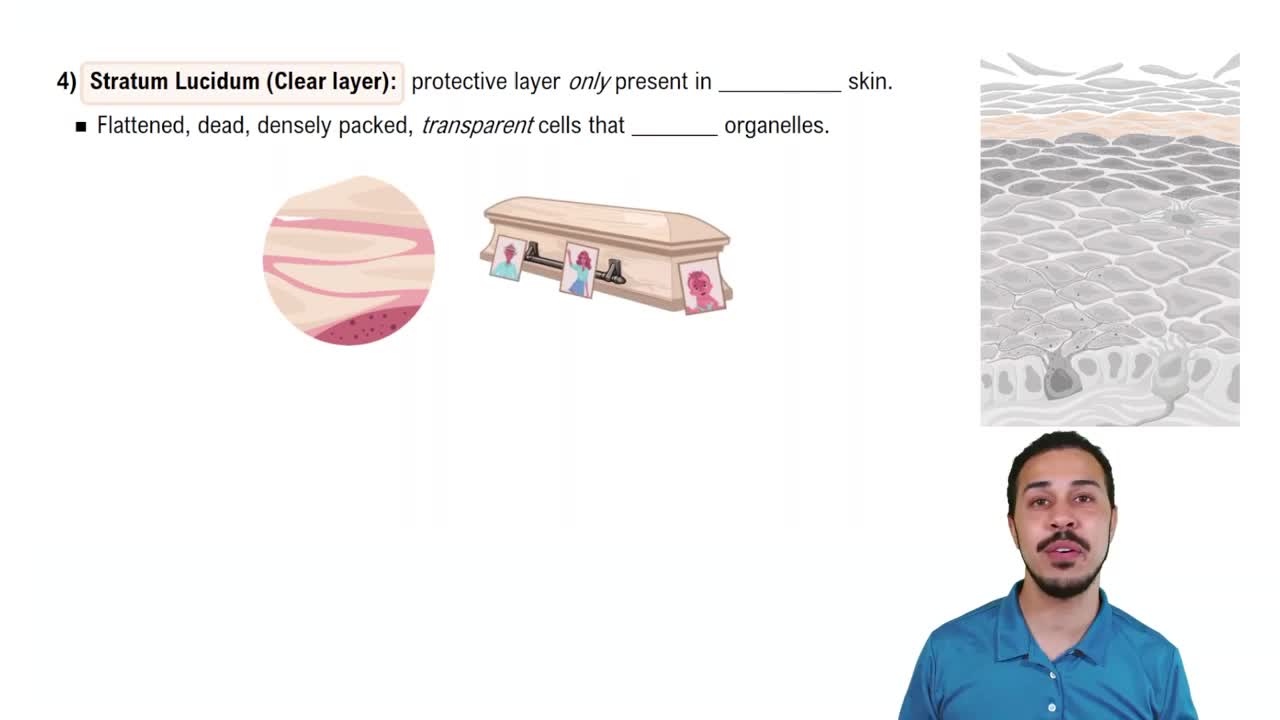Here are the essential concepts you must grasp in order to answer the question correctly.
Capillary Structure
Capillaries are the smallest blood vessels in the body, characterized by their thin walls composed of a single layer of endothelial cells. This structure allows for efficient exchange of gases, nutrients, and waste products between blood and surrounding tissues, distinguishing them from veins and arteries, which have thicker walls and multiple layers.
Recommended video:
General Structure of Capillary Beds
Tunica Layers
Blood vessels are generally composed of three tunica layers: the tunica intima (inner layer), tunica media (middle layer), and tunica externa (outer layer). In capillaries, only the tunica intima is present, which facilitates the rapid exchange of materials, while veins and arteries have all three layers to support their functions under higher pressure.
Recommended video:
Epidermal Layers: Stratum Lucidum (Clear Layer)
Smooth Muscle in Blood Vessels
Smooth muscle is a key component of the tunica media in arteries and veins, allowing for vasoconstriction and vasodilation to regulate blood flow and pressure. In contrast, capillaries lack smooth muscle, which is essential for their role in nutrient and gas exchange, as they rely on diffusion rather than muscular contraction.
Recommended video:
 Verified step by step guidance
Verified step by step guidance Verified Solution
Verified Solution



 14:36m
14:36m